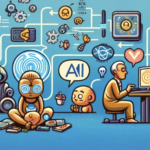
Digital sustainability refers to using digital technologies that have a positive impact on the environment.
The global success rate for digital sustainability initiatives is currently at only 4%.
However, this number is forecasted to grow to 35% in the next few years.
Interest in digital sustainability is growing largely due to the fact that environmental concerns now drive many consumers’ buying decisions.
In fact, 70% of US consumers now care about sustainability when purchasing a product.
And 88% say that they would be more loyal to a brand implementing sustainable practices.
Table of Contents
What’s next in digital sustainability
Digital sustainability is part of the GreenTech meta trend.
The global GreenTech market is forecasted to grow at a CAGR of 26% through 2030.
IoT, AI, and cloud computing are some of the core technologies driving this growth.
Digital sustainability is also being driven by the need to meet the United Nations Sustainable Development Goals.
The UN has set 17 goals for sustainable development, which include ending poverty and hunger, protecting the environment, and ensuring gender equality.
Digital technologies can help achieve these goals.
Digital sustainability examples
For example, digital agriculture can help farmers increase yields while using less water and fewer pesticides.
And digital health technologies can help prevent disease and improve access to healthcare.
Digital sustainability is also being used to improve energy efficiency and reduce greenhouse gas emissions.
For example, smart buildings use sensors and data to reduce energy consumption.
And electric vehicles are becoming more popular as a way to reduce transportation emissions at the point source of the emissions.
Digital sustainability strategy
To achieve digital sustainability, businesses must adopt a holistic, cross-functional approach.
This includes using technologies such as IoT, AI, and big data to improve resource efficiency and reduce greenhouse gas emissions.
It also involves developing digital products that have minimal environmental impact and engaging with customers to help them make more sustainable choices.
Additionally, businesses should work with policymakers and other stakeholders to develop digital sustainability initiatives at the local, national, and global levels.
Overall, digital sustainability is an urgently needed way to address some of today’s most critical environmental challenges.
And it presents a huge opportunity for businesses to improve their bottom line while also doing good for the planet.
Digital sustainability is becoming an increasingly important topic as we look for ways to reduce our environmental impact.
The global digital sustainability market is expected to grow significantly in the next few years, driven by consumer demand and the need to meet UN Sustainable Development Goals.
Digital technologies can help achieve these goals in many ways, from reducing energy consumption and greenhouse gas emissions, to improving resource efficiency and access to healthcare.
To be successful, businesses must adopt a holistic approach that includes using digital technologies, developing sustainable products, and engaging with customers on digital sustainability initiatives.

What are the challenges of digital sustainability?
Despite the many benefits of digital sustainability, there are still some challenges that need to be addressed.
One of the biggest challenges is the lack of awareness about digital sustainability initiatives.
Another challenge is the high cost of implementing digital sustainability initiatives.
However, as more and more companies adopt digital sustainability practices, the cost is expected to come down.
The digital sustainability landscape
Digital sustainability is a rapidly growing area with many different stakeholders.
These include technology providers, government agencies, NGOs, and businesses.
Technology providers are developing digital technologies that can help reduce the environmental impact of businesses.
Government agencies are creating policies and regulations to encourage businesses to adopt digital sustainability practices.
NGOs are raising awareness about digital sustainability and working to create standards for measuring progress.
And businesses are implementing digital sustainability initiatives to improve their environmental performance.
GreenTech in digital sustainability
In fact, according to McKinsey, using green AI to reduce food waste could save organizations $123B a year by 2030.
Sunlight transport, plastic roads, and plant walls are examples of trending GreenTech products.
As digital sustainability becomes more important to consumers, it is likely that we will see even more innovative digital technologies emerge in this space.
The future of digital sustainability
Digital sustainability is still in its early stages.
But it’s clear that digital technologies can have a positive impact on the environment.
As interest in digital sustainability grows, we can expect to see more initiatives and innovations that help make our world a greener place.
Conclusion
Overall, digital sustainability is a critical area for businesses and other stakeholders to focus on.
By implementing sustainable digital practices, companies can not only help the environment but also improve their bottom line and build loyalty among their customers.
Whether you’re a technology provider, government agency, NGO, or business, digital sustainability presents an important opportunity for all of us.


![Backwards 3: How to Type "Ɛ" [EASY]](https://softwareblade.com/wp-content/uploads/2022/02/Screen-Shot-2022-02-19-at-9.03.25-PM-150x150.png)